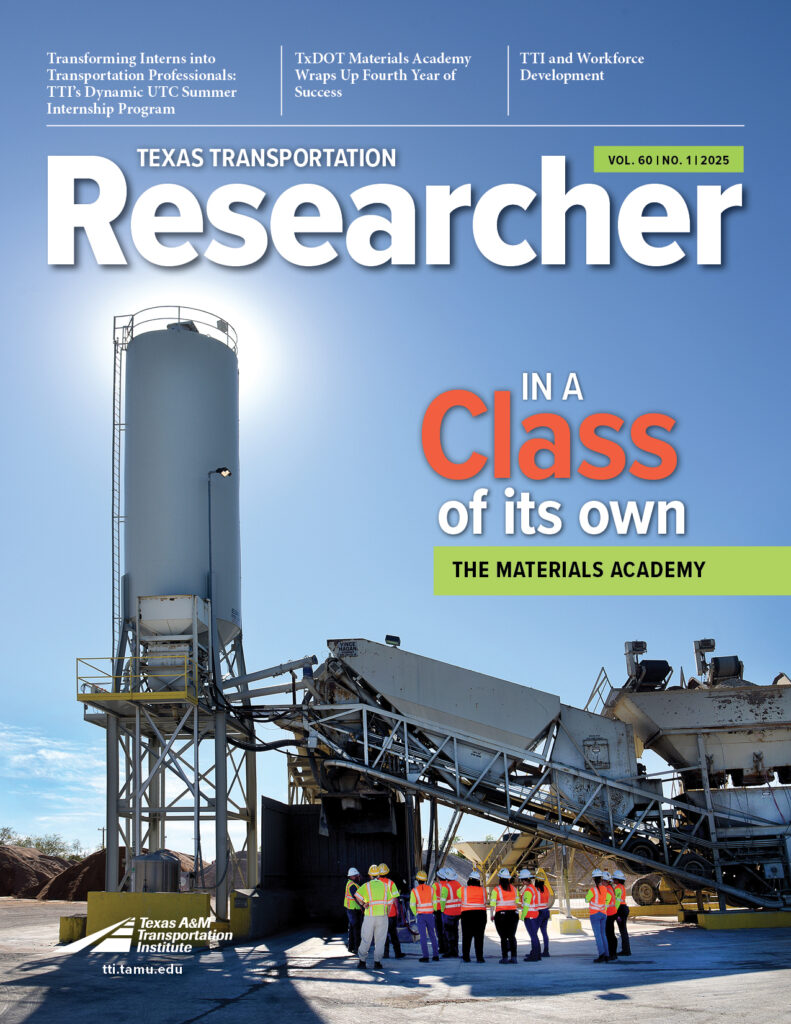Just How Effective Are Peak-Hour Lanes?
FROM VOLUME 58, NUMBER 3 (2022)

FROM VOLUME 58,
NUMBER 3 (2022)

In December 2020, the Texas Department of Transportation (TxDOT) Fort Worth District opened peak-hour lanes (PHLs) to help relieve traffic congestion on an approximately 2.5-mile section of the four-lane, divided, access-controlled SH 121 from Bedford to Euless. Researchers at the Texas A&M Transportation Institute’s (TTI’s) Arlington urban office are currently working on providing the TxDOT Fort Worth District with a before-and-after assessment of the operational performance of the PHLs.
“What we’re trying to do for TxDOT is provide a comprehensive analysis of before-and-after implementation data to understand the impacts these PHLs have had on congestion over time,” says TTI Research Specialist Stephen Ranft, lead researcher on the project. “Our assessment includes a comprehensive analysis of before-and-after implementation data related to traffic volume, travel speeds, queue-jumping volumes, and origin and destination data within the SH 121 corridor.”
To create these PHLs, TxDOT and its regional partners converted the inside shoulder to a third travel lane — on both sides of SH 121 — for motorists to use during the peak operating hours of Monday through Friday, 5:00 a.m. to 8:00 p.m. Operational information regarding lane accessibility is relayed to drivers via dynamic message signs, new pavement markings and static signs. When not open for use, the inside shoulder remains available for emergencies and disabled vehicles.
“The early results of our analysis have shown that these PHLs have impacted traffic in a positive way,” says Ranft. “We’re seeing improved traffic volumes, increased speed and better traffic flow in the corridor during the PHLs’ assigned operating hours.”
“The early results of our analysis have shown that these PHLs have impacted traffic in a positive way. We’re seeing improved traffic volumes, increased speed and better traffic flow in the corridor during the PHLs’ assigned operating hours.”
Stephen Ranft, TTI Research Specialist
